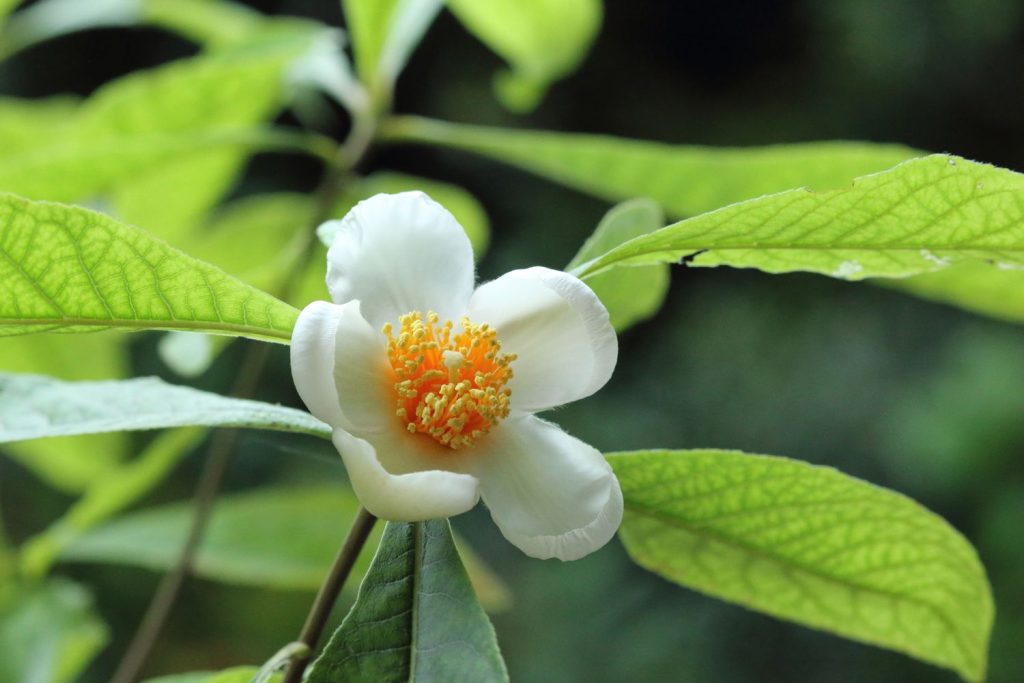10 Extinct Plants With a Fascinating History
4 min read
Most plants that have gone extinct did so due to events beyond human control. But for the past two centuries, many plants have been victims of habitat destruction that caused their extinction.
Here are 10 historic plants that have gone extinct—whether recently or long, long ago.
Araucarioxylon arizonicum
Petroglyphs in the Petrified Forest National Park.
JimVallee / Getty Images
Travel through the Petrified Forest National Park, and you might see remnants of 200 to 250 million-year-old Araucarioxylon arizonicum trees that thrived during the Triassic Period. Some are even preserved as petroglyphs, carved by the Indigenous people living in the area as long as 8,000 years ago.
Today, the national park is in the Navajo and Apache counties of northeastern Arizona. Other trees of the Araucaria genus still exist around the world—the most famous of them perhaps being the Norfolk Island pine.
Atriplex tularensis
Known by the common name Tulare saltbush or Bakersfield saltbush, Atriplex tularensis was last seen in 1991. It was an annual herb that grew in the alkaline salt pans at the southern end of California’s Central Valley until it was driven to extinction by the expansion of agriculture.
As the Central Valley grew to become a world agricultural leader, farmers and communities drained inland lakes and tapped deep underground aquifers faster than mountain runoff could refill it, depriving Atriplex tularensis of water.
Calamites
Calamites (the tall trees pictured) survived during the Carboniferous Period.
Elena Duvernay / Stocktrek Images / Getty Images
Calamites have been extinct since the Permian era some 250 million years ago, but fellow members of the horsetail genus (Equisetum) still grow in the world’s swamps. Like modern horsetails, Calamites grew in thickets from rhizomes creeping underground, sending up hollow, ribbed, bamboo-like trunks that grew to 100-160 feet (30-50m).
Flourishing during the Carboniferous Period, when Earth’s landmasses were all connected as Pangaea, Calamite fossils can be found on all the continents.
Cooksonia
Cooksonia—the earliest known vascular plant, meaning its tissues conducted water, sap, and nutrients—dates back to approximately 425 million years ago. Like other early plants to evolve out of green algae, Cooksonia lacked leaves. How it photosynthesized the sun’s energy is still the subject of scientific debate.
The stems on Cooksonia are what made it revolutionary. With water-conducting stems, Cooksonia no longer needed to remain submerged in water. It could colonize dry land and pave the way for animals to later emerge from the sea.
Franklinia alatamaha
Sueo Takano / 500px / Getty Images
Franklinia alatamaha has been extinct in the wild since the early 19th century and only exists in cultivation. A native of the southeastern United States, it was first known to non-native Americans when it was identified in 1765.
Named after Benjamin Franklin, the tree only survived him by 13 years, having last been seen in the wild in 1803. Already rare in the late 18th century, the reasons for its extinction are not known. Today, cultivated specimens only exist because the tree was lucky enough to have flowers that pleased the human eye.
Glossopteris
Glossopteris is one of the few success stories of the ill-fated Terra Nova expedition led by Robert Falcon Scott, who froze to death in Antarctica along with his crew. When their bodies were later discovered, the 270 million-year-old fossils they had collected were brought back to London. Glossopteris was identified, proving that Antarctica was once attached to the other continents and covered with plant life, confirming the theory of plate tectonics.
Glossopteris is an early gymnosperm, a seed-producing tree whose descendants include conifers and cycads.
Nesiota elliptica (St. Helena Olive)
You might think that one of the world’s remotest islands, Saint Helena in the South Atlantic Ocean (where Napoleon was once exiled), would be a safe place for native plants. But the arrival of the Portuguese in 1502 led to the extinction of numerous Saint Helena native plants, due to deforestation and the introduction of goats. The last remaining tree kept alive in cultivation died in 2003.
Orbexilum stipulatum
Better known as leather-root or Falls-of-the-Ohio scurfpea, Orbexilum stipulatum was a native of Rock Island, Kentucky, and was last seen in 1881. The plant relied on the grazing of buffalo, who once roamed the Ohio River valley. Overhunting drove the buffalo out of the region and with it Orbexilum stipulatum. A dam built on the site submerged Rock Island, sinking hopes of the plant’s survival.
Sigillaria
dottedhippo / Getty Images
Sigillaria is one of the most common types of plants from which fossil fuels are made. Looking like Joshua trees or something from a Dr. Seuss book, Sigillaria flourished during the Carboniferous (or coal-bearing) Period of 300 to 360 million years ago.
The tree-like plants rose above the floor of peat-forming swamps, reproducing by spores contained in cones at the ends of their branches. Their fossils have been uncovered during coal mining operations all across the world, from western Pennsylvania to Inner Mongolia.
Sophora toromiro
aloha_17 / Getty Images
The Toromiro tree (Sophora toromiro) was once endemic to Easter Island (Rapa Nui), but despite efforts to cultivate it from seeds collected in the 1960s, the tree has since been declared extinct in the wild. The origins and meaning of Easter Island’s famous monumental statues remain mysteries, but so too do the reasons for the island’s deforestation.
A combination of over-harvesting, climatic changes, and cultural developments seem to be intertwined reasons for the collapse of a once sustainable society. Whatever the reason and whatever the pace of change, the haunting lesson of Easter Island remains the same.





